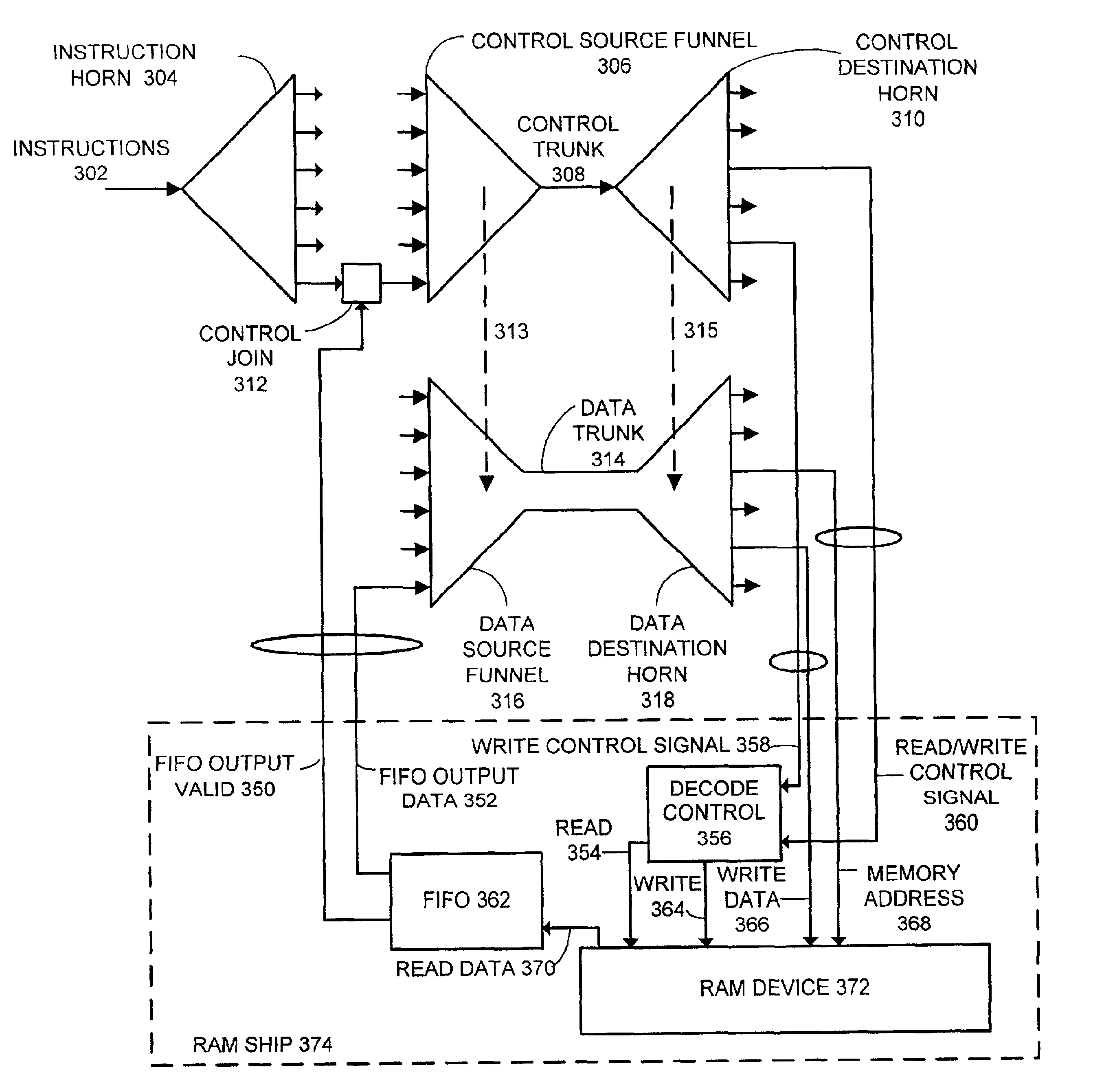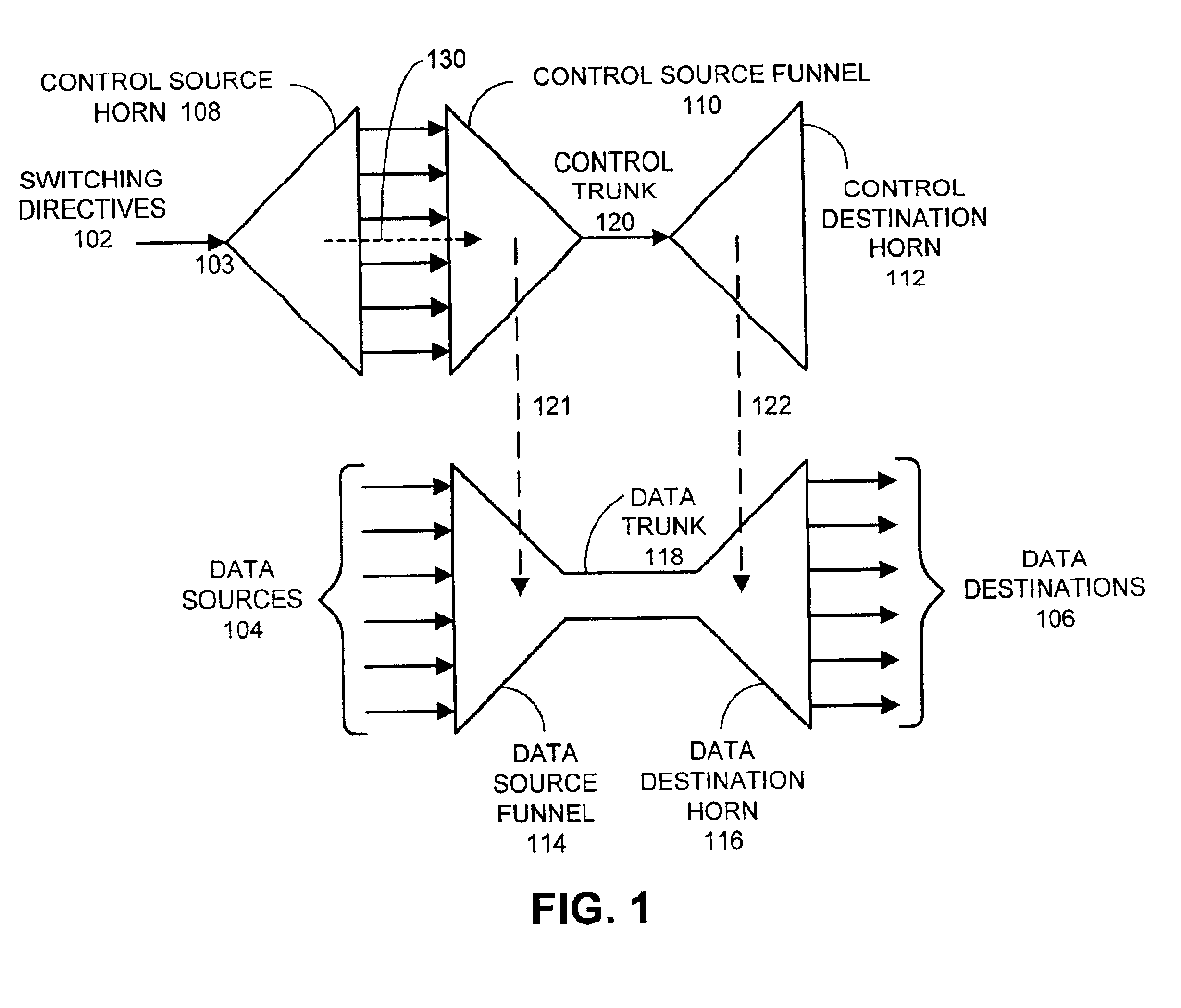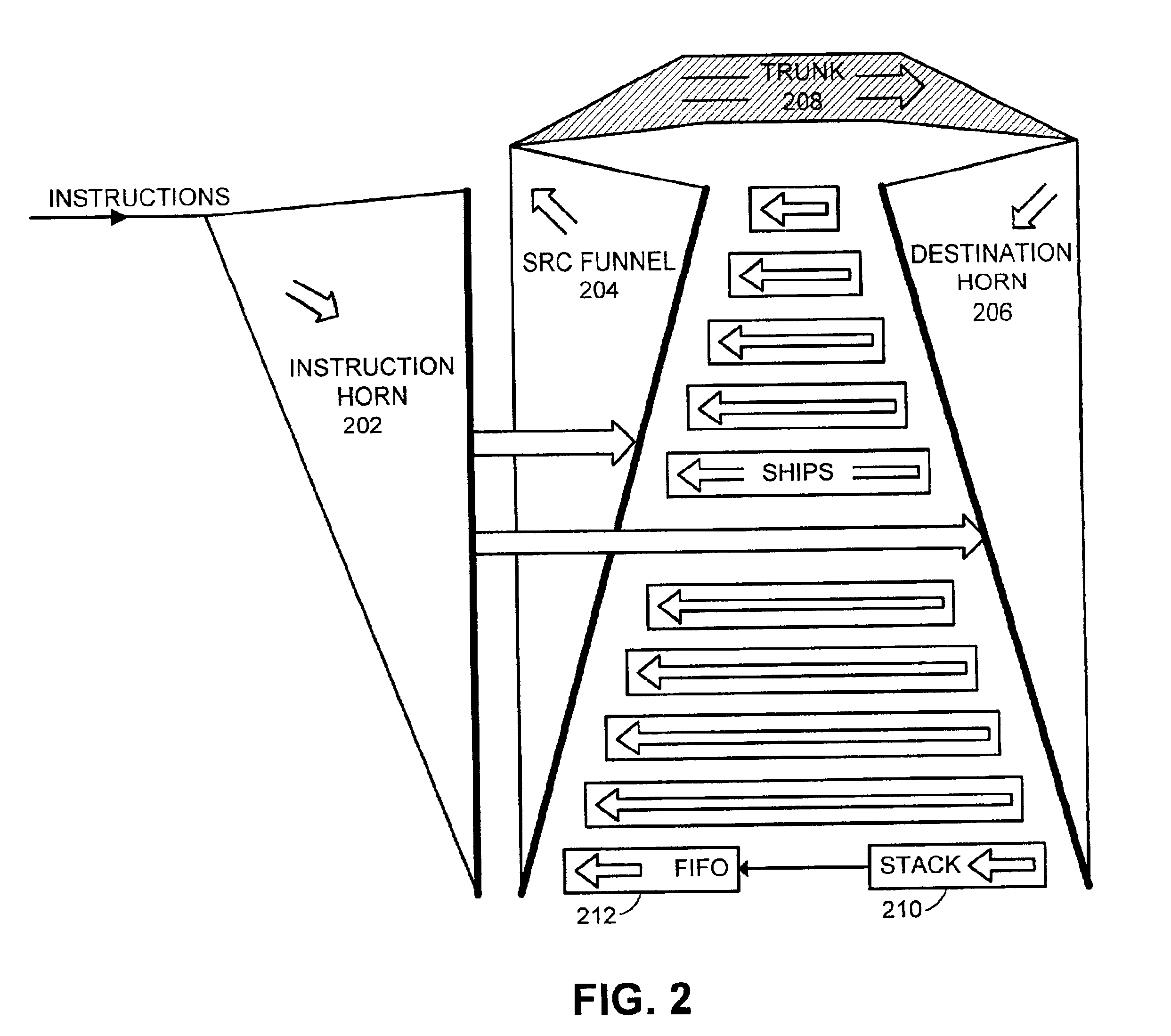Apparatus and method for sequencing memory operations in an asynchronous switch fabric
a technology of asynchronous switch fabric and apparatus, which is applied in the direction of pulse technique, data switching network, instruments, etc., can solve the problems of limiting the achievable communication rate, placing considerable electrical load on the wires in the bus, and slow communication paths in comparison with other logical structures
- Summary
- Abstract
- Description
- Claims
- Application Information
AI Technical Summary
Benefits of technology
Problems solved by technology
Method used
Image
Examples
Embodiment Construction
[0054]The following description is presented to enable any person skilled in the art to make and use the invention, and is provided in the context of a particular application and its requirements. Various modifications to the disclosed embodiments will be readily apparent to those skilled in the art, and the general principles defined herein may be applied to other embodiments and applications without departing from the spirit and scope of the present invention. Thus, the present invention is not intended to be limited to the embodiments shown, but is to be accorded the widest scope consistent with the principles and features disclosed herein.
Switching System
[0055]FIG. 1 illustrates a switching system for data in accordance with an embodiment of the present invention. A data path structure including a data source funnel 114, a data trunk 118, and a data destination horn 116 can carry information from any of the sources 104 to any of the destinations 106. Data source funnel 114 inclu...
PUM
 Login to View More
Login to View More Abstract
Description
Claims
Application Information
 Login to View More
Login to View More - R&D
- Intellectual Property
- Life Sciences
- Materials
- Tech Scout
- Unparalleled Data Quality
- Higher Quality Content
- 60% Fewer Hallucinations
Browse by: Latest US Patents, China's latest patents, Technical Efficacy Thesaurus, Application Domain, Technology Topic, Popular Technical Reports.
© 2025 PatSnap. All rights reserved.Legal|Privacy policy|Modern Slavery Act Transparency Statement|Sitemap|About US| Contact US: help@patsnap.com



